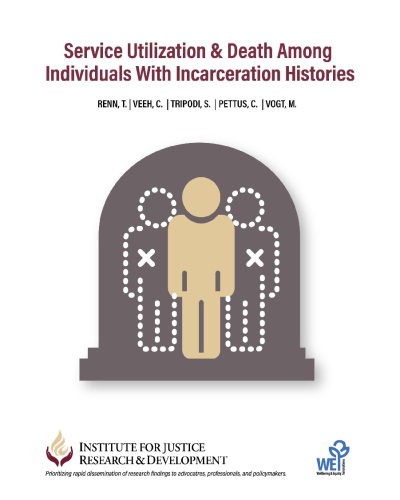
Service Utilization & Death Among Individuals with Incarceration Histories
Published:
| Author: Tanya Renn, Christopher Veeh, Stephen Tripodi, Carrie Pettus-Davis, Megan Vogt
Individuals releasing from prison have a higher death rate than the general population. Few studies have explored pre-incarceration service utilization and health among those who die after prison. This paper fills the gap by exploring service usage and health trends among individuals who died and those who survived.
Category:
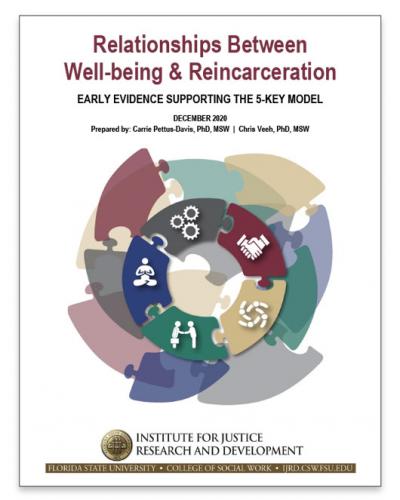
Associations between Well-Being and Reincarceration
Published:
| Author: Carrie Pettus-Davis, Christopher Veeh
Preliminary findings from the 5-Key Model study suggest that participation in 5-Key Model services was associated with reduced reincarceration at 8 and 15 months post-release. Increased overall well-being and increased well-being on each of the 5 Keys were also associated with reduced reincarceration; those receiving the 5-Key Model had higher levels of well-being at 15 months post-release.
Category: 5-Key Model for Reentry, Well-Being

The Role of Preparatory Programming in Increasing the Effectiveness of a Sex Offender Treatment Intervention
Published:
| Author: Tanya Renn, Christopher Veeh, Melissa D. Grady, David Edwards, Carrie Pettus-Davis, Katherine Kelton
Increasing the effectiveness of programs designed to treat individuals who have sexually offended is a critical step in reducing the rates of sexual violence in our communities. Yet, the research on such programs have yielded inconsistent results with regards to their effectiveness in reducing sexual recidivism among participants. Some researchers have explored whether the dose of treatment impacts recidivism, but there remains limited knowledge around the dose-response relationship for individuals who have sexually offended.
Category: Sex Offenders

COVID-19, Incarceration, and Reentry
Published:
| Author: Carrie Pettus-Davis, Stephanie Kennedy, Faye Miller
This report presents data on the pandemic-related experiences of incarcerated individuals and individuals recently released from incarceration. Study participants report how they learned about the pandemic while incarcerated and identified the strategies both the facilities they were incarcerated in and they themselves as individuals took to prevent infection. They described stress, anxiety, fear, and worry as they reflected on their incarceration during the pandemic.
Category: 5-Key Model for Reentry, Well-Being, COVID-19
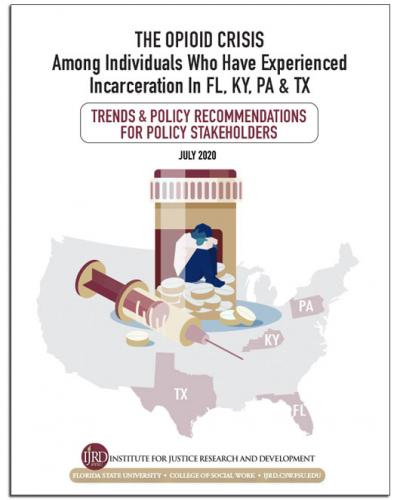
THE OPIOID CRISIS AMONG 5-KEY MODEL STUDY PARTICIPANTS
Published:
| Author: Carrie Pettus-Davis, Shelby Pederson
Learn how opioid use affects individuals in our first four 5-Key Model Phase 1 states - Florida, Kentucky, Pennsylvania, and Texas - as they leave incarceration and return home.
Category: 5-Key Model for Reentry
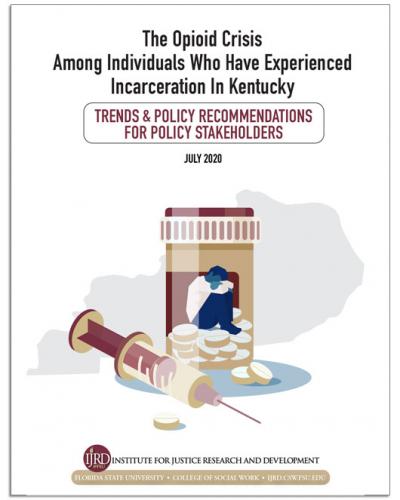
THE OPIOID CRISIS AMONG INDIVIDUALS WHO HAVE EXPERIENCED INCARCERATION IN Kentucky
Published:
| Author: Carrie Pettus-Davis, Shelby Pederson
Learn how opioid use affects individuals in Kentucky as they leave incarceration and return home. The reentry period is a high-risk time for individuals who use opioids and for those diagnosed with an opioid use disorder. Policy recommendations include infusing the Opioid Use Disorder Continuum of Care into both correctional and community-based settings to increase screening, linkage, initiation, and retention of affected individuals into prevention or treatment services.
Category: 5-Key Model for Reentry

THE OPIOID CRISIS AMONG INDIVIDUALS WHO HAVE EXPERIENCED INCARCERATION IN Pennsylvania
Published:
| Author: Carrie Pettus-Davis, Shelby Pederson
Learn how opioid use affects individuals in Pennsylvania as they leave incarceration and return home. The reentry period is a high-risk time for individuals who use opioids and for those diagnosed with an opioid use disorder. Policy recommendations include infusing the Opioid Use Disorder Continuum of Care into both correctional and community-based settings to increase screening, linkage, initiation, and retention of affected individuals into prevention or treatment services.
Category: 5-Key Model for Reentry
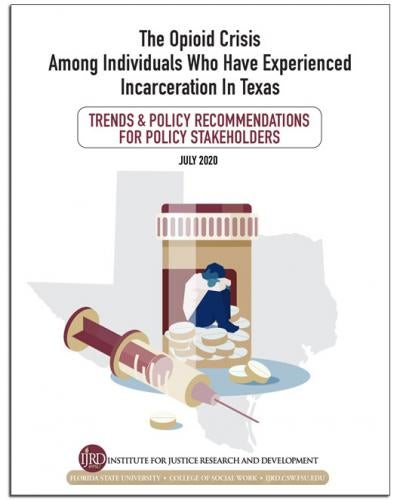
THE OPIOID CRISIS AMONG INDIVIDUALS WHO HAVE EXPERIENCED INCARCERATION IN Texas
Published:
| Author: Carrie Pettus-Davis, Shelby Pederson
Learn how opioid use affects individuals in Texas as they leave incarceration and return home. The reentry period is a high-risk time for individuals who use opioids and for those diagnosed with an opioid use disorder. Policy recommendations include infusing the Opioid Use Disorder Continuum of Care into both correctional and community-based settings to increase screening, linkage, initiation, and retention of affected individuals into prevention or treatment services.
Category: 5-Key Model for Reentry
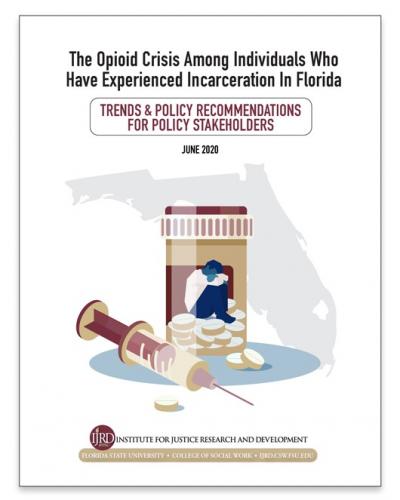
The opioid crisis among individuals who have experienced incarceration in Florida
Published:
| Author: Carrie Pettus-Davis, Shelby Pederson
Learn how opioid use affects individuals in Florida as they leave incarceration and return home. The reentry period is a high-risk time for individuals who use opioids and for those diagnosed with an opioid use disorder. Policy recommendations include infusing the Opioid Use Disorder Continuum of Care into both correctional and community-based settings to increase screening, linkage, initiation, and retention of affected individuals into prevention or treatment services.
Category: 5-Key Model for Reentry, Results for Policymakers

Trauma and Loss During Reentry
Published:
| Author: Carrie Pettus-Davis, Tanya Renn, Stephanie Kennedy
This report presents data about the extremely stressful life events experienced by study participants in the 8 months after they left incarceration and returned home. These stressful life events included losing a loved one to homicide, having been violently assaulted, witnessing violence and death in the home or community, finding out about the death or serious injury of a loved one, being diagnosed with a life-threatening illness, and losing critical resources like housing, employment, income, transportation, and social support.
Category: Reentry, Well-Being, 5-Key Model for Reentry
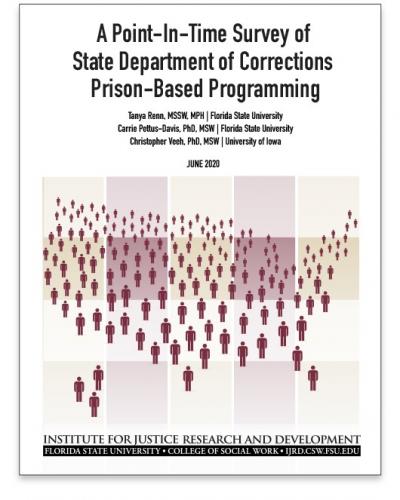
A Point-In-Time Survey of State Department of Corrections Prison-based Programming
Published:
| Author: Tanya Renn, Carrie Pettus-Davis, Christopher Veeh
Research indicates that providing services to incarcerated individuals increases the chance that they will be successful upon reentry to communities. The current study assessed the provision of services (i.e. trauma and reentry) in state departments of corrections (DOCs) throughout the United States. DOCs from all fifty states and the District of Columbia were contacted to determine what services were provided to prisoners, with 44 of 51 providing responses. Results suggest that DOCs provide a range of programming, as well as assessments.
Category: In-Prison Intervention

Reforms of Policy Barriers to Positive & Productive Community Engagement of Individuals with Felony Histories
Published:
| Author: Carrie Pettus-Davis, Christopher Veeh, Sheree Hickman
Over the past four decades, civil disability policies have proliferated throughout the United States in tandem with the rising use of criminal sanction as social policy. There are currently more than 45,000 different state and federal statutes that impose a type of civil disability on individuals with a felony conviction. This preliminary report provides a brief overview of the reform efforts that have thus far been enacted, but not introduced, to either eliminate or ameliorate existing civil disability policies at the state level between 2010 and 2017.
Category: Civil Disabilities
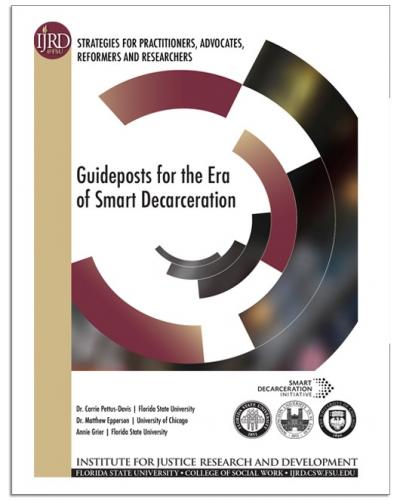
Guideposts for the Era of Smart Decarceration
Published:
| Author: Carrie Pettus-Davis, Matthew Epperson, Annie Grier
Despite the expansion of efforts to reduce jail and prison populations and reform criminal justice policy and practice, a comprehensive, inclusive, and actionable approach has been relatively absent from the conversation. Such an approach is only possible if criminal justice stakeholders agree upon the foundational objectives that can generate lasting decarceration. In this report, we offer guideposts and actionable strategies for the era of smart decarceration in America.
Category: Smart Decarceration

Going Back to Jail Without Committing a Crime
Published:
| Author: Carrie Pettus-Davis, Stephanie Kennedy
This report presents data on reasons other than criminal behavior that 5-Key Model study participants report they were re-arrested.
Category: Reentry, Well-Being, 5-Key Model for Reentry

Employment and Behavioral Health-5-Key Model Preliminary Results for Policy Stakeholders
Published:
| Author: Carrie Pettus-Davis, Tanya Renn, Christopher Veeh
This report features preliminary 5-Key Model results on study participant employment and behavioral health outcomes approximately eight months post-release. Results are presented by state to maximize usefulness to policy stakeholders.

